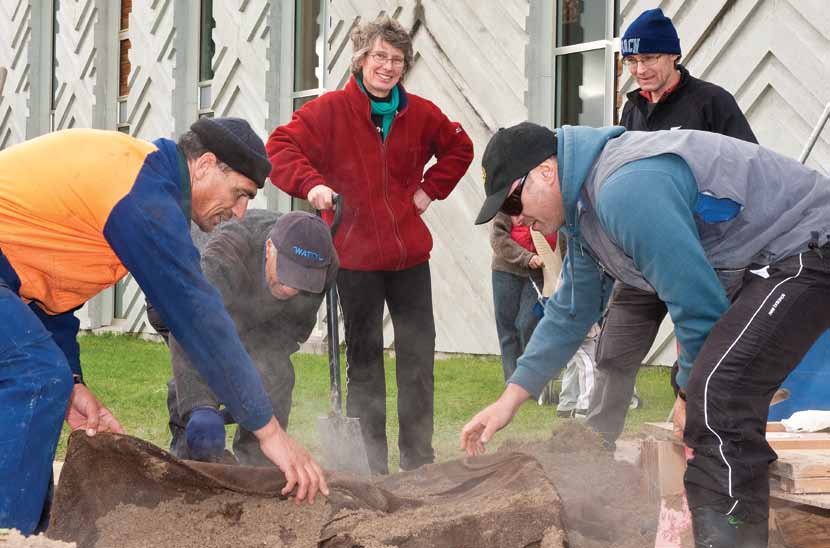Hangi stones hold clues to Earth’s past geomagnetic field

For most people, the high point of their first hāngi is tasting food cooked in an earth oven. But for Dr Gillian Turner it was when the meal was over - so she could get inside the pit.
In the end, Gillian, a geophysicist in the School of Chemical and Physical Sciences, had to wait three days for the oven to cool down enough for her to inspect the hāngi stones at the bottom of it.
Gillian is leading a team of scientists studying changes in Earth’s magnetic field, the constantly moving force that makes compass needles point to the north and guides many birds and animals on their migratory path.
Keeping track of that force, she says, shines light on what is happening inside the Earth’s molten iron core. Her research centres on changes to the magnetic field in the Southwest Pacific region over the past 10,000 years.
The region is important, Dr Turner says, because it is the last big region of the world where such work is yet to be done. “It’s the missing piece of a global jigsaw puzzle.”
The scientists, who have three years of Marsden funding for the project, are gathering data from volcanic rocks, lake and marine sediments and pieces of old pottery, all of which contain natural records of the magnetic field.
In collaboration with archaeologist Dr Bruce McFadgen, they are also investigating the idea of sourcing records from ancient hāngi stones at undisturbed pits around New Zealand.
To check whether the stones could provide the kind of information required, an experiment was carried out by laying a hāngi at Waiwhetū Marae in Lower Hutt.
"Hāngi stones get very hot which causes the grains of magnetic minerals in them to lose any magnetisation. As they cool, they become remagnetised by the present magnetic field," says Gillian.
"If today’s stones give an accurate record of the direction and strength of the magnetic field then we can be confident ancient stones will do the same."
Gillian was given hāngi stones from Nelson, Hawke’s Bay, Wellington, Ōtaki, Mount Taranaki and Mount Ngauruhoe. In some of them, she inserted thermocouples to monitor their internal temperature.
Victoria’s Te Kawa a Māui/School of Māori Studies helped source the rocks and organise the hangi which coincided with Matariki celebrations and attracted several hundred visitors.
The hāngi was started just before dawn and Gillian monitored the steadily rising temperature. She expected the temperature within the hangi to reach a high of perhaps 800 degrees Celsius and was amazed to see the gauge reach 1,150°C after a few hours.
Uncovering the rocks a few days later was a precise operation, she says.
"We excavated very carefully and then made a plaster of Paris cap on the top of each stone - a bit like icing a Christmas cake. Before removing them, we marked magnetic north and the direction to the sun on each stone."
The rocks are now back in Gillian’s laboratory where sampling and further magnetic measurements will take place. The early signs look positive.
"I’m optimistic we can use the findings to design a protocol that will allow us to measure rocks at archaeological hāngi sites."
There are plenty of those throughout New Zealand she says, some of which date back to five or six hundred years before Pākehā came to New Zealand.
In addition to the scientific benefits of the experiment, Gillian says it was a privilege to collaborate with Māori in conducting the experiment.
"It was a quite special meeting up of science with Māori culture, and we had amazing support during the planning and on the day. That we were given and loaned hangi stones was particularly significant as they are very precious to their owners.”
